
Interior of the Church of the Resurrection/ Holy Sepulcher, Yerushalayim (Jerusalem)
| To Duval Family Home Page | Asia | |
| To Chris Home Page | Yisra'el, Lubnān, al-Urdun, the Ghazzah Strip and Sūriyya | |
| To Earth (Geography Home Page) | Yisra'el, Lubnān, al-Urdun, the Ghazzah Strip |
ירושלים (Yerushalayim), also called القدش (al-Quds), Ιερουσαλήμ (Ierousalem) and Jerusalem, is the capital of ישראל (Yisra'el or Israel). The city is divided between Jews and Palestinians, who are mostly Moslems. It is located in the hills along an old inland trade route between the Mediterranean Sea and Yam HaMelah (the Dead Sea). The metropolitan population in 2013 of 1.452 million.
It was an old Jebusite city when it was conquered by David, soon to be king of ישראל (Yisra'el or Israel).
The city is a UNESCO World Heritage Site, honoring: the ruins of the Jewish temple destroyed by the Romans, including the Western Wall; the Christian Church of the Resurrection/ Holy Sepulchre and the nearby Via Dolorosa, a pilgrimage pathway; and, atop the mount above the site of the temple, the Moslem Dome of the Rock (7th century) and Al-Aqsa Mosque (completed 8th century).
The tallest building is the 32 story Holyland Tower. Other modern buildings include the Crown Plaza Hotel, which includes a lobby sculpture of a 150 centimeter bronze globe; the Mount of Olives Church, its bell tower and its garden, with its kilometer and a half convent wall; the King David, now a hotel, formerly the colonial British Army Headquarters; the Leumi Building, decorated on one side with torches between windows; and the Knesset, the Israeli parliament's meeting place.
| Year | Population | Political entity |
| 1000 BCE | | ישראל (Yisra'el or Israel) | |
| 800 BCE | 36,000| Memlekhet Yehudah (Kingdom of Judah or Judea) | |
| 650 BCE | 45,000| vassal of the Assur Lugalate (Assyrian Empire) | |
| 430 BCE | 49,000| Persian Malkate (Persian Empire) | |
| 200 BCE | 25,000| Ptolemaïkè Basileía (Ptolemaic Empire) | |
| 361 CE | 50,000| Rhomania (Romania or the Byzantine Empire) | |
| 500 CE | 50,000| Rhomania (Romania or the Byzantine Empire) | |
| 622 CE | 50,000| Eranshahr (Sassanian Empire) | |
| 800 CE | | al-Khilifah al-Abbasiyyah al-Islamiyyah (Abbasid Empire) | |
| 900 CE | | al-Misr (Tulunid Egypt) | |
| 1000 CE | 60,000| al-Fatimiyyun (Fatimid Empire) | |
| 2013 CE | 1,452,000 (metropolitan)| ישראל (Yisra'el or Israel) | |

Interior of the Church of the Resurrection/ Holy Sepulcher, Yerushalayim (Jerusalem)
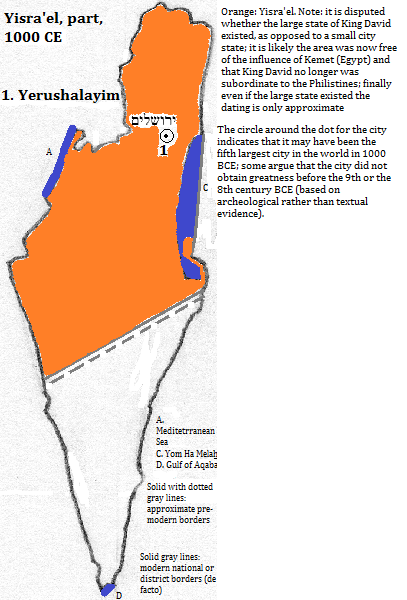
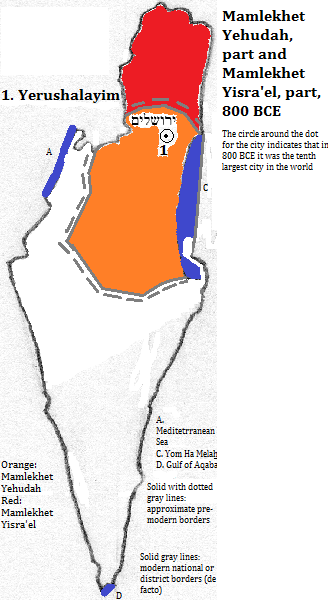
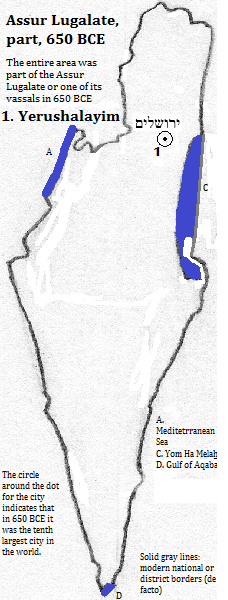

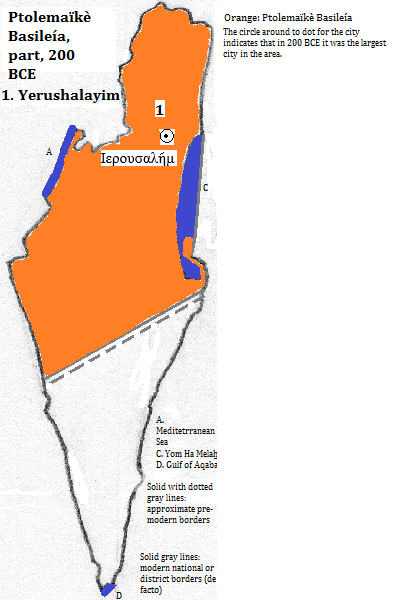
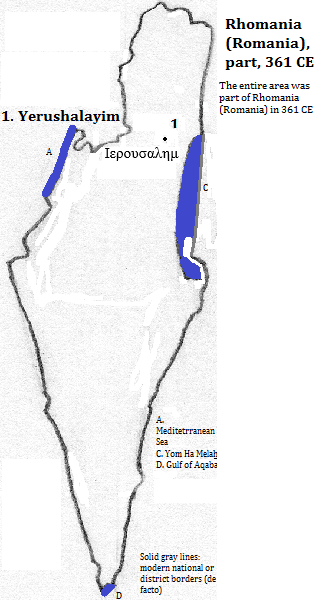


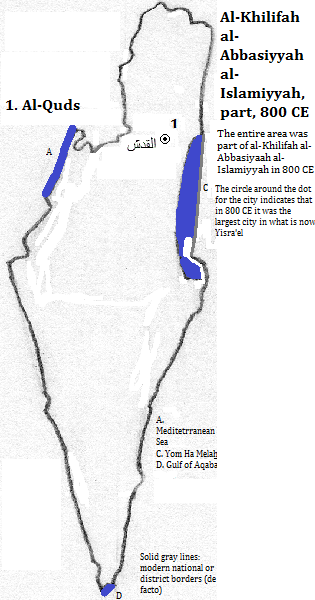

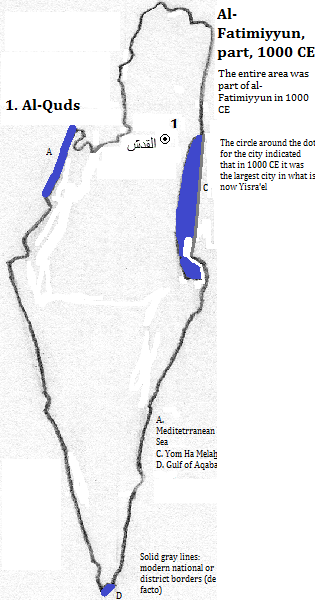
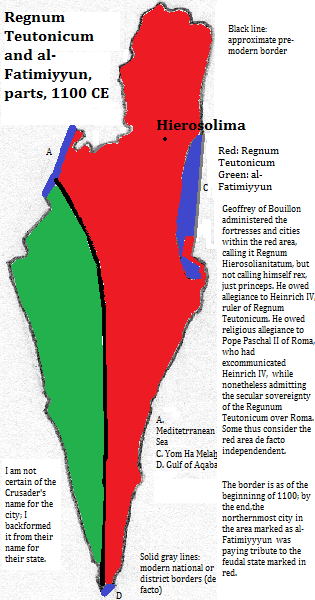
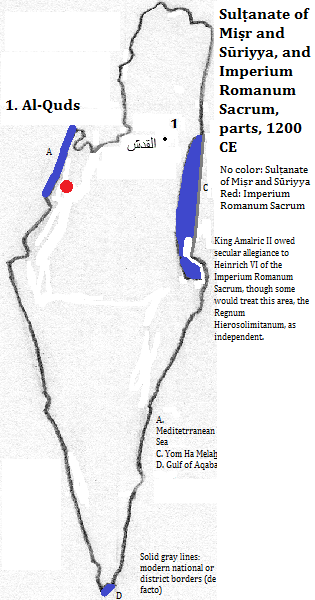
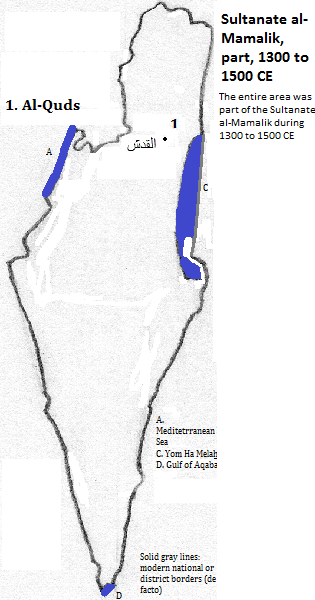
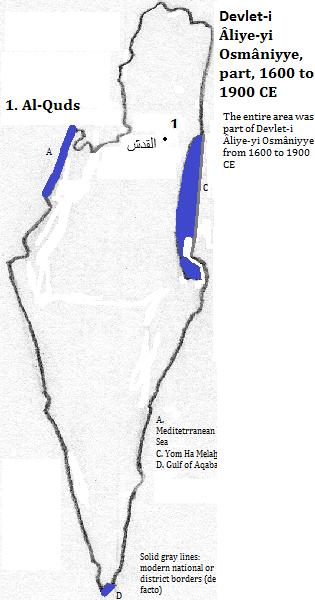
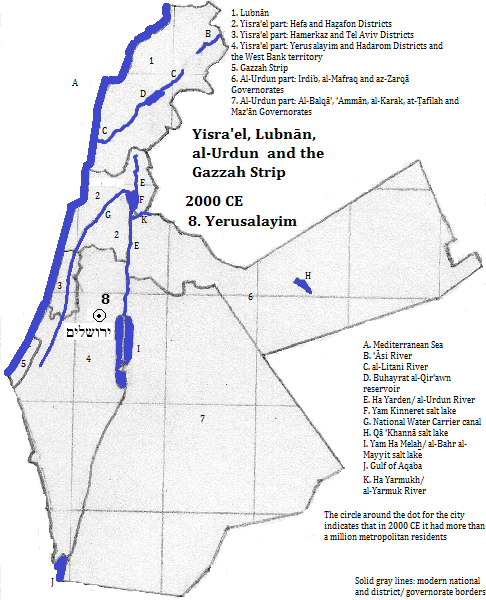
1. world-gazetteer.com, accessed 6/3/2013.
2. This is based on the text of the Jewish Bible and is approximately dated at 1000 BCE. Some dispute that a large state existed that early, holding that the city was just an important city state. Earlier the area had been vassal to Km.t (Kemet or Egypt), but the influence had most probably faded away by 1000 BCE. David had been personally subordinate to a Philistine, but the texts hold that he had thrown off this allegiance. Everyone agrees that it was a great capital city by the 8th century BCE.
3. The Jewish state initially possessed only part of the city, but when nearby states attempted and failed to conquered Yisra'el, Yisra'el took the rest of the city.
4. Information about modern buildings is from emporis.com, accessed 6/3/2013.
5. Tertius Chandler, Four Thousand Years of Urban Growth, 2nd ed. (The Edwin Mellen Press, 1987), "Tables of World's Largest Cities". It was the world's fifth largest city in 1000 BCE, and the tenth largest in 800 and 650 BCE. It was the area's largest city in 430 and 200 BCE and 800, 900 and 1000 CE and was tied for largest in 500 CE according to him. In 1000 BCE, Chandler has it as smaller than Babilu (Babylon), which was smaller than Loyang, which had 50 thousand residents. It was larger than Inebu-Hedju (Memphis), which was larger than Hastinapura, which was larger than Pyongyang, which had 25 thousand residents. The Roman city was called Aelia Capitolina. Other sources dispute the large size of the city in 430 BCE, though not its standing as the largest city in what is now Yisra'el. In 800 CE, Chandler has it as smaller than Anbar, which had 60 thousand residents. It was larger than Marv, which was larger than Kaifeng, which had 55 thousand residents. In 900 CE, Chandler has it smaller than Kufa, which was smaller than Bhimavaram, which was smaller than Kaifeng, which was smaller than Varanasi, which was smaller than Yangzhou, which had 60 thousand residents. It was larger than Khambat, which was larger than Tula, which had 50 thousand residents.